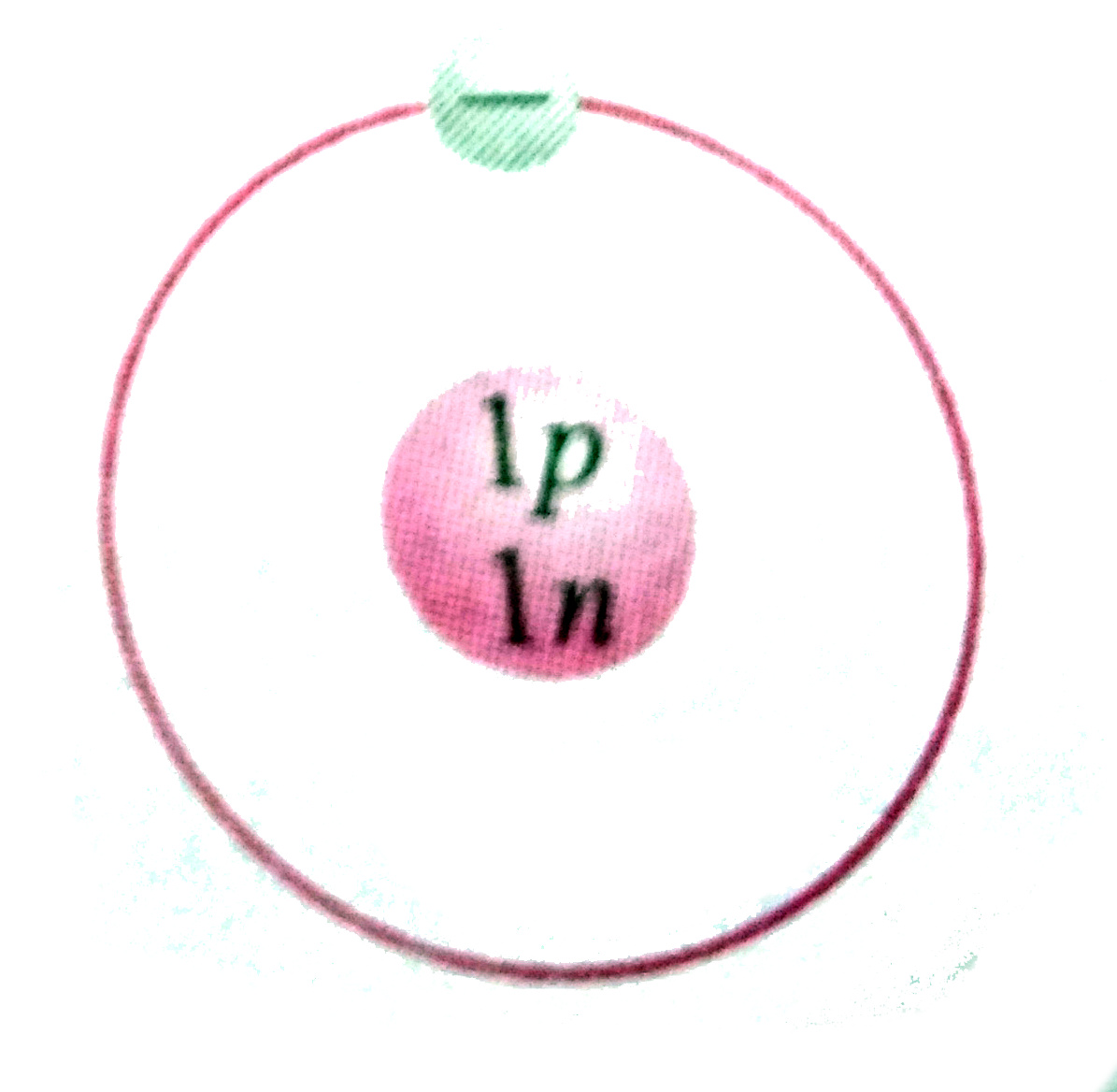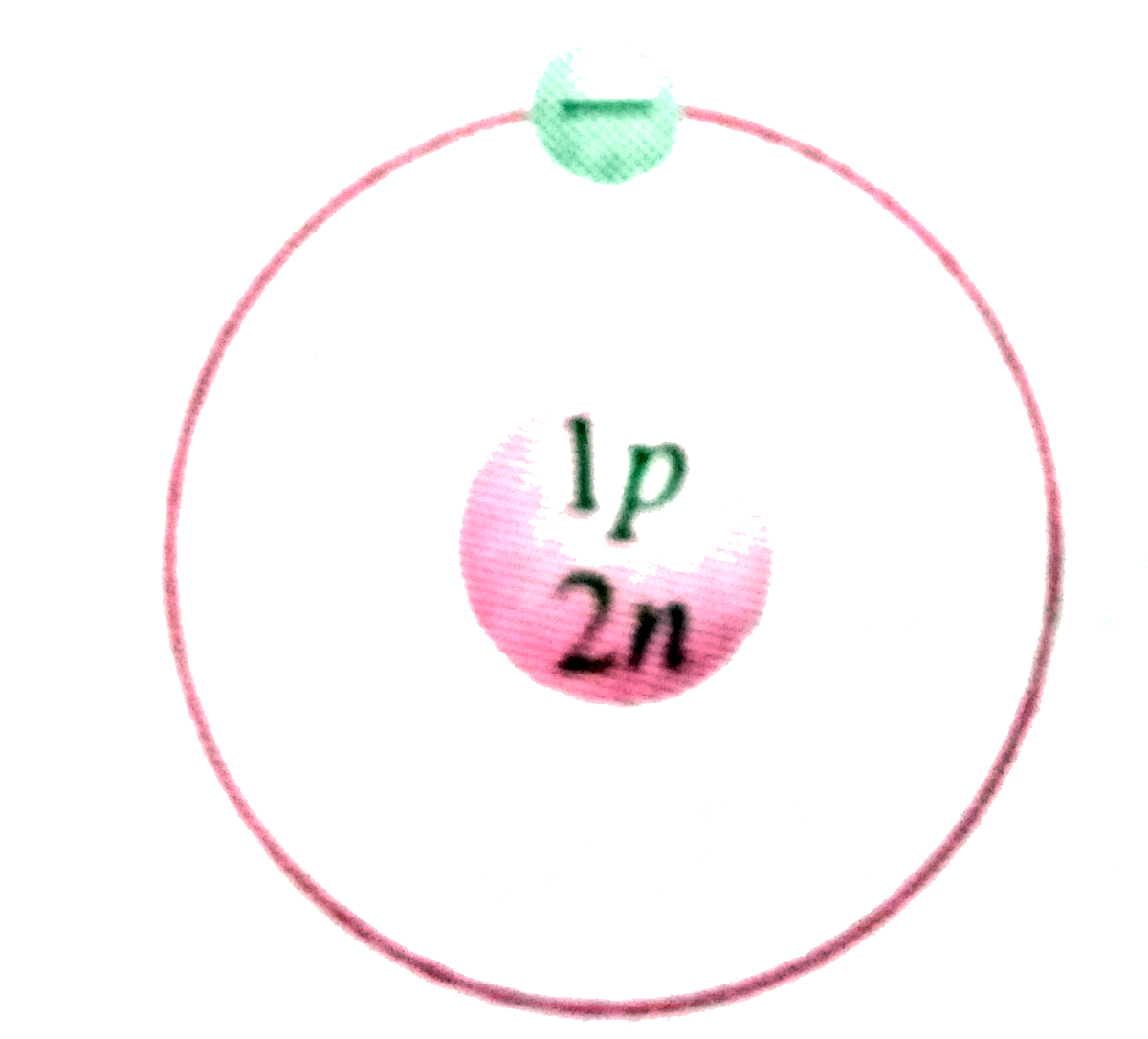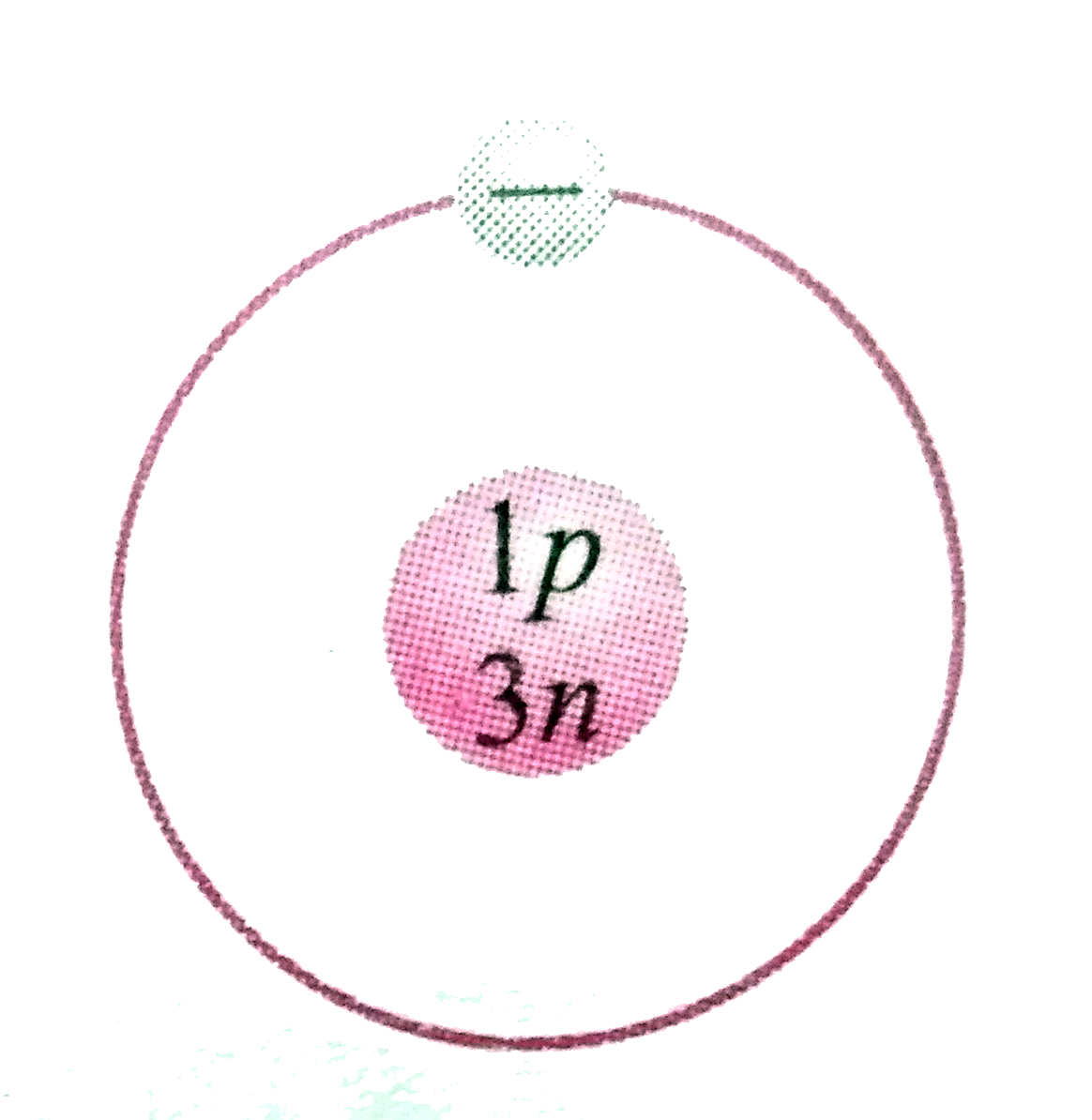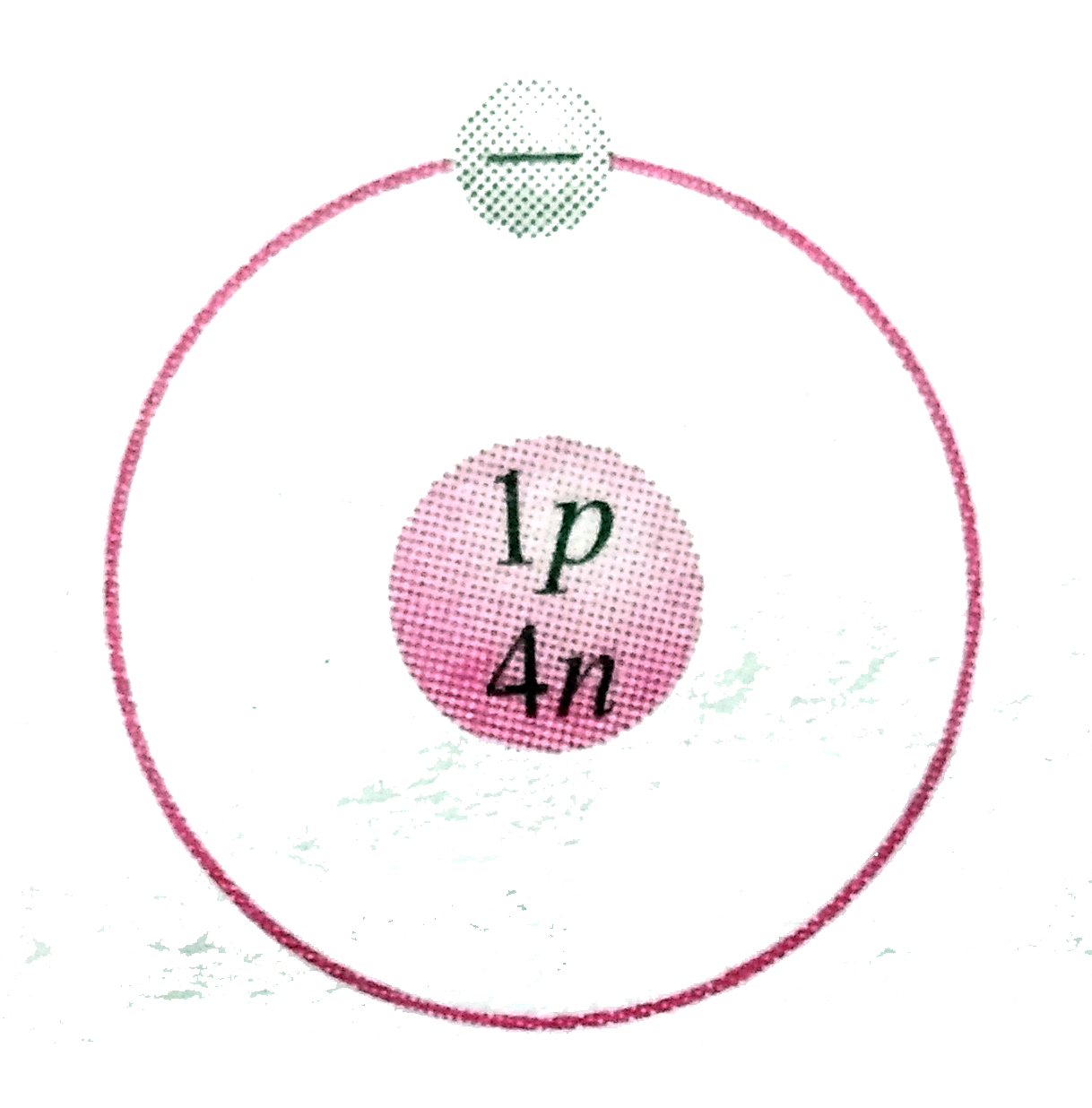Which of the following is an atom of tritium?




The correct Answer is:B
To determine which of the following is an atom of tritium, we need to understand the characteristics of tritium, an isotope of hydrogen.
1. Identify Tritium: Tritium is an isotope of hydrogen. It is represented as 31H where:
- The mass number (A) is 3.
- The atomic number (Z) is 1.
2. Determine the Composition:
- The atomic number (Z = 1) indicates that tritium has 1 proton.
- The mass number (A = 3) indicates the total number of protons and neutrons combined.
- To find the number of neutrons, we use the formula:
Number of Neutrons=A−Z=3−1=2
- Therefore, tritium has 1 proton and 2 neutrons.
3. Electron Configuration:
- As a neutral atom, tritium will have the same number of electrons as protons. Hence, it has 1 electron.
4. Visual Representation:
- In a simplified model, tritium can be represented as:
- 1 proton in the nucleus.
- 2 neutrons in the nucleus.
- 1 electron orbiting around the nucleus.
5. Identify the Correct Option:
- From the options given, we need to find the one that matches the configuration of tritium: 1 proton, 2 neutrons, and 1 electron.
Conclusion:
- The correct answer is the option that represents an atom with 1 proton and 2 neutrons, which corresponds to tritium.
- The mass number (A) is 3.
- The atomic number (Z) is 1.
- The atomic number (Z = 1) indicates that tritium has 1 proton.
- The mass number (A = 3) indicates the total number of protons and neutrons combined.
- To find the number of neutrons, we use the formula:
Number of Neutrons=A−Z=3−1=2
- Therefore, tritium has 1 proton and 2 neutrons.
- As a neutral atom, tritium will have the same number of electrons as protons. Hence, it has 1 electron.
- In a simplified model, tritium can be represented as:
- 1 proton in the nucleus.
- 2 neutrons in the nucleus.
- 1 electron orbiting around the nucleus.
- From the options given, we need to find the one that matches the configuration of tritium: 1 proton, 2 neutrons, and 1 electron.
- The correct answer is the option that represents an atom with 1 proton and 2 neutrons, which corresponds to tritium.
Topper's Solved these Questions
- BOOK - NCERT FINGERTPS ENGLISHCHAPTER - HYDROGEN EXERCISE - HOTS (HIGHER ORDER THINKING SKILLS)9videos
HYDROGEN
- BOOK - NCERT FINGERTPS ENGLISHCHAPTER - HYDROGEN EXERCISE - NCERT (EXEMPLAR PROBLEMS)18videos
HYDROGEN
- BOOK - NCERT FINGERTPS ENGLISHCHAPTER - HYDROCARBONS EXERCISE - Assertion And Reason15videos
HYDROCARBONS
- BOOK - NCERT FINGERTPS ENGLISHCHAPTER - ORGANIC CHEMISTRY-SOME BASIC PRINCIPLES AND TECHNIQUES EXERCISE - Assertion And Reason12videos
ORGANIC CHEMISTRY-SOME BASIC PRINCIPLES AND TECHNIQUES
Similar Questions
Knowledge Check
- Question 1 - Select One
Which of the following properties of atom could be explained correctly by Thomson model of atom?
AOverall neutrality of atom.BSpectra of hydrogen atom.CPosition of electrons, protons and neutrons in atom.DStability of atom.
In which of the following, carbon atom has sextet of electrons?
View SolutionWhich of the following is not the basic postulates of Dalton's atomic theory ?
View SolutionWhich of the following is not present in a hydrogen atom?
View SolutionWhich of the following is not permissible arrangement of electrons in an atom ?
View SolutionFor the electrons of oxygen atom, which of the following statements correct?
View SolutionWhich of the following pairs have the same number of atoms?
View SolutionWhich of the following has maximum number of atoms?
View Solution

